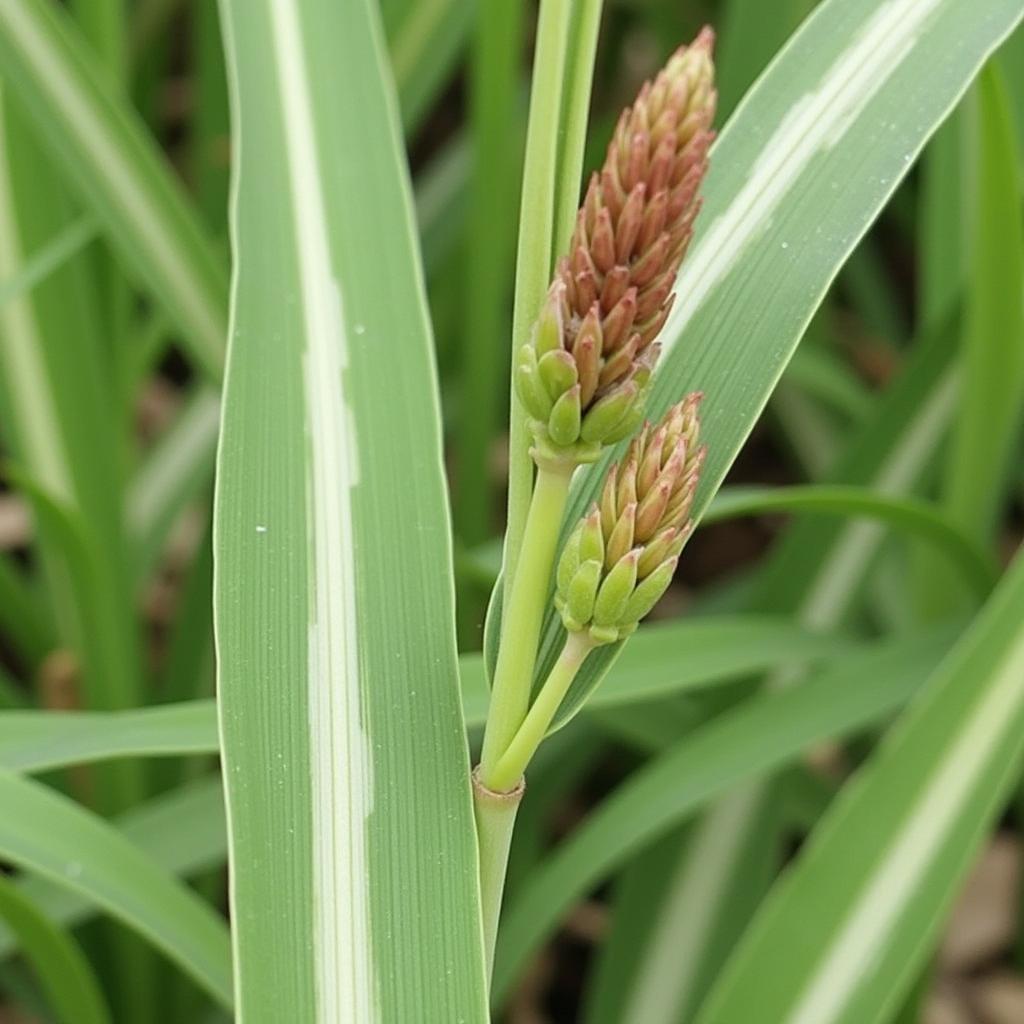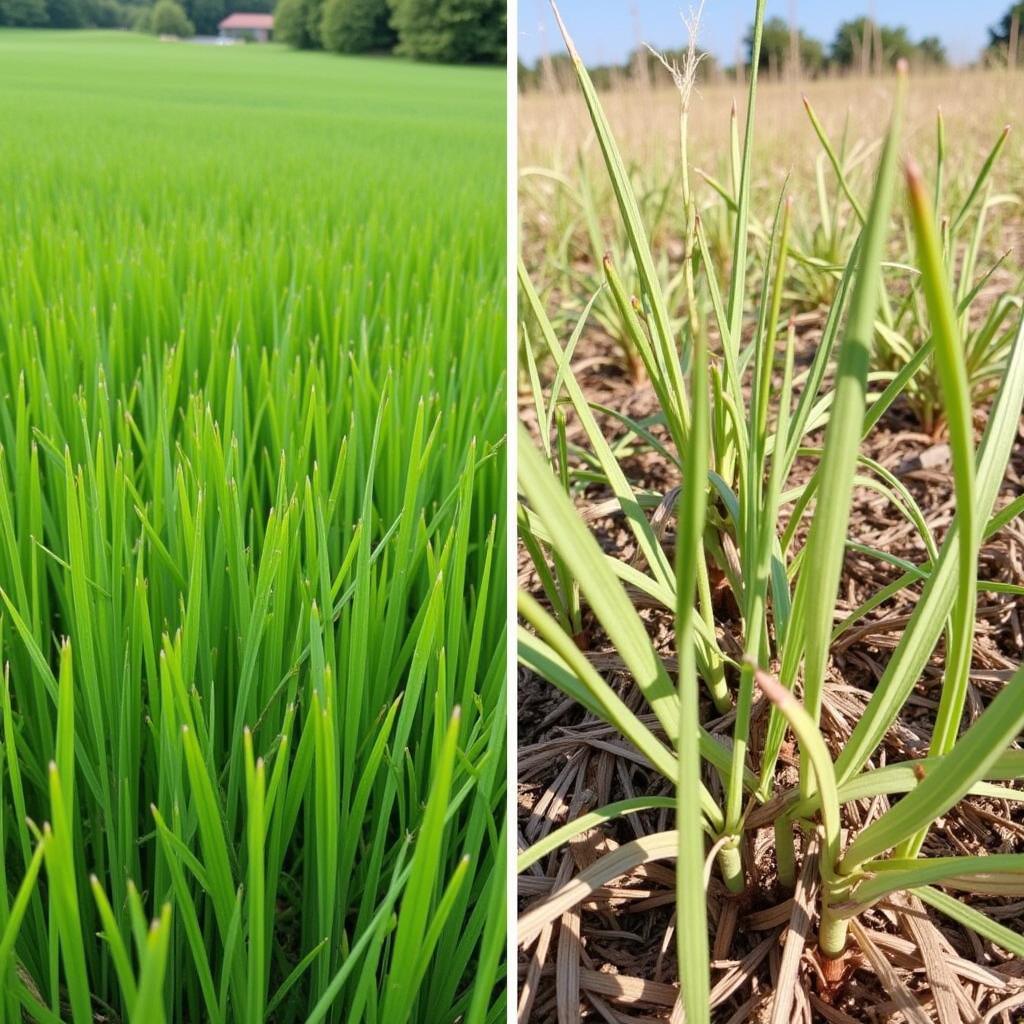Johnson grass (Sorghum halepense) is a common sight in pastures across the United States, but many horse owners are unaware of the potential danger it poses to their equine companions. This invasive grass species contains a cyanide compound that can be toxic to horses, especially during certain growth stages or when stressed by drought or frost.
While it’s tempting to view lush Johnson grass as a free meal for your horses, understanding the risks and taking steps to manage this pervasive plant is crucial for protecting your herd’s health.
The Hidden Danger: Cyanide Poisoning in Horses
Johnson grass produces a cyanide compound called dhurrin, which converts to hydrogen cyanide when the plant is damaged. This means grazing horses can ingest significant amounts of cyanide if they consume large quantities of Johnson grass, particularly new growth, regrowth after mowing, or wilted leaves.
Cyanide disrupts the body’s ability to utilize oxygen, leading to a condition known as cyanide poisoning. Symptoms of cyanide poisoning in horses can range from mild respiratory distress to sudden death, depending on the amount ingested.
Recognizing Johnson Grass: Identification is Key
Proper identification is crucial for effective Johnson grass management. This tall, perennial grass can grow up to six feet high and is characterized by:
- Single, stout stems: Unlike other grasses with multiple stems, Johnson grass typically has a single, robust stem.
- Broad, flat leaves: The leaves are long, flat, and have a prominent white midrib.
- Large seed heads: Mature plants produce large, reddish-brown seed heads that resemble those of sorghum grain.
 Johnson Grass Identification
Johnson Grass Identification
Factors Influencing Toxicity Levels
While Johnson grass always contains cyanide, several factors can influence the concentration levels, making it more dangerous at certain times:
- New growth: Young Johnson grass plants and new shoots after mowing contain higher levels of dhurrin.
- Stress: Drought, frost, or trampling can increase cyanide levels as the plant releases dhurrin as a defense mechanism.
- Wilting: Wilted Johnson grass leaves can also have elevated cyanide concentrations.
 Stressed Johnson Grass
Stressed Johnson Grass
Signs of Johnson Grass Poisoning in Horses
Early detection of cyanide poisoning is essential for successful treatment. Be vigilant for these warning signs in your horses:
- Rapid breathing and difficulty breathing
- Bright red mucous membranes
- Increased heart rate
- Muscle tremors and weakness
- Staggering and incoordination
- Convulsions
- Sudden death
Preventing Johnson Grass Poisoning
Minimizing the risk of Johnson grass poisoning requires a proactive approach to pasture management. Here are key strategies:
- Eradication: While challenging, completely removing Johnson grass from your pastures is the most effective long-term solution. This may involve herbicides, repeated mowing, or a combination of methods.
- Maintain healthy pastures: Encourage the growth of desirable forage grasses through proper fertilization, rotational grazing, and weed control. A healthy pasture is less susceptible to Johnson grass invasion.
- Avoid overgrazing: Overgrazed pastures provide ideal conditions for Johnson grass to thrive. Implement rotational grazing practices and ensure adequate forage is available to discourage horses from consuming toxic plants.
- Monitor pastures: Regularly inspect your pastures for Johnson grass, especially after mowing, drought, or frost. Remove any plants you find to prevent accidental ingestion.
- Provide supplemental hay: Offering high-quality hay, particularly during periods of drought or when Johnson grass is actively growing, can help reduce the risk of horses consuming toxic amounts.
What to Do if You Suspect Johnson Grass Poisoning
If you suspect your horse has ingested Johnson grass and shows signs of poisoning, immediate veterinary attention is critical. Contact your veterinarian immediately and describe the situation.
Maintaining a Safe Pasture for Your Horses
Johnson grass is a common but potentially deadly threat to horses. By understanding the risks, identifying the plant, and implementing proactive management strategies, you can help protect your equine companions from this toxic invader. Regularly inspect your pastures, consult with your veterinarian, and prioritize your horses’ well-being to ensure a safe and healthy grazing environment.
FAQs about Johnson Grass and Horses
1. Can horses eat Johnson grass hay?
It’s best to avoid feeding horses hay that contains Johnson grass. Even when dried, the cyanide compounds can remain present and pose a risk, especially if the hay was cut when the plant was stressed or in its early growth stages.
2. Is Johnson grass toxic to other livestock?
Yes, Johnson grass can be toxic to other livestock, including cattle, sheep, and goats. The level of toxicity can vary depending on the animal species and the factors influencing cyanide concentration.
3. Are there any safe ways to utilize Johnson grass?
While not recommended for horses, Johnson grass can be used for hay or silage for other livestock if it is harvested and cured properly to reduce cyanide levels. However, this process requires careful management and monitoring.
4. What are some alternative forage options for horses?
There are many safe and nutritious forage options for horses, including:
- Horse Pasture Seed Mix
- Timothy hay
- Orchard grass
- Alfalfa (in moderation)
- Bermuda grass
5. How can I learn more about identifying poisonous plants in my pastures?
Contact your local agricultural extension office or a qualified equine veterinarian for resources on identifying poisonous plants specific to your region.
Need Help with Pasture Management?
Creating a safe and healthy environment for your horses is our top priority. If you’re concerned about Johnson grass or other potential hazards in your pastures, we’re here to help!
Contact Justus Horses USA today:
- Phone: 0772127271
- Email: [email protected]
- Address: QGM2+WX2, Vị Trung, Vị Thuỷ, Hậu Giang, Việt Nam
Our team of experts is available 24/7 to answer your questions and provide guidance on pasture management, natural fly spray for horses, and more.